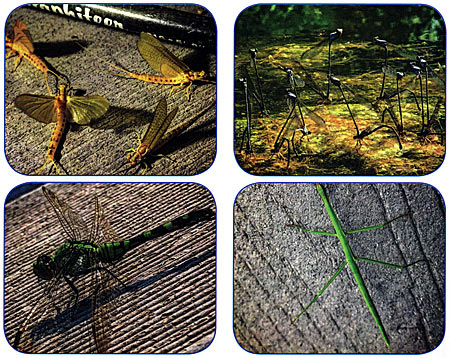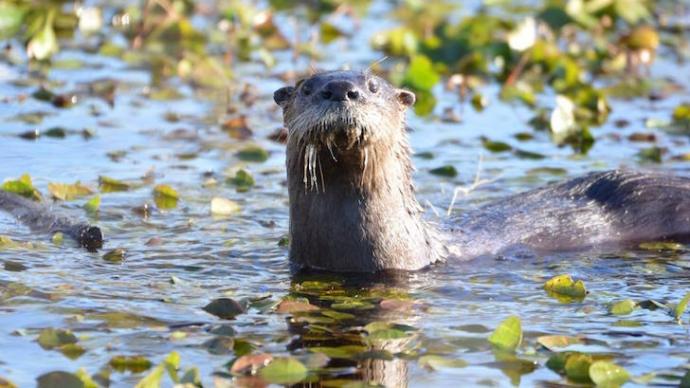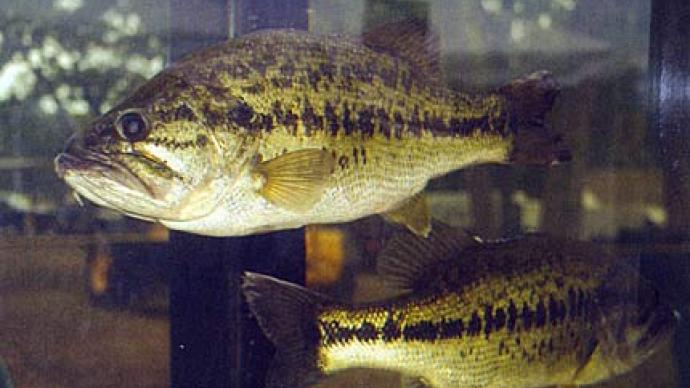
One of the fun things to learn about your pond is its insect populations and the dynamics of those mostly invisible little creatures. Invisible in the sense that the postman and meter reader are invisible in our neighborhoods. But, when you start thinking and observing, you'll start to see the obvious. We have lots of insects in and around our waters, especially this time of year.
When a pond is first impounded, amazing things happen. Life in, and around, water begins. Microbes begin to grow, almost immediately, to break down organic matter under water. Flying insects whose origins are under water, begin to lay their eggs. Baby insects, called nymphs, start the life cycle.
Here are a few examples of aquatic insects that we love to have.
The most obvious are dragonflies. They flit around, changing directions, and chasing each other. Their iridescent colors are amazing, and their compound eyes are fascinating. Throw in the fact they eat mosquitoes, and dragonflies have become a creature we love. Actually, over time, I've learned to create habitat under water just to protect their nymphs so we can have lots of them. Dragonfly larvae are a preferred food for small fish, so making sure they have rock piles, or tight brush piles to escape to are important. For our science geeks, dragonflies belong to the order Odonata, with fossil records dating back more than 325 million years. So, they've been around a long time. They're threatened in some areas of the world due to diminishing habitat, especially wetlands. So, what you do with your pond to encourage these insects is a good thing.
There are more than 3,000 species, classified into almost 350 genera, in 11 families. What that means to us is a wide variety of dragonflies, mostly based on geography. Here's an interesting fact. Dragonflies are found on every continent except Antarctica. Compared to other insects around your waters, dragonflies are pretty big. Their bright colors are almost metallic, and they are extremely agile in movement. Hold still and one may land on you, but at a flinch, they're gone, fast. Another cool fact about dragonflies is they are predators during all phases of their lives. I've actually watched a dragonfly nymph catch and eat a newly hatched fish in one of our ponds. They'll eat insects, crustaceans, and other bugs or nymphs in the water. Fish hatcheries will often treat their water to get rid of these predatory insects. But, in your water, these bugs are important. They become part of the diversity of your pond, adding to the food chain, hatching and becoming an important part of nuisance insect control, science to our articles. Dragonfly mating is pretty dadgum cool. The boy has to attract a girl, while fighting off the other boys—kind of like high school kids. The male clasps the female, and she reciprocates. As this happens, they fly in tandem and perch on a twig or plant where they exchange pleasantries. Eggs are deposited, usually amongst plants, and nymphs develop in water.

Damselflies are another common species. While similar looking, they are quite different than dragonflies. They aren't nearly as agile, and their colors are pretty, but not quite as feisty as dragonflies. Comparing the two is like comparing showy fighter pilots to someone in a small private plane. Big difference, but amazing none-theless. They are smaller and slimmer than dragonflies, and a big difference is that many species are sexually dimorphic. Males are typically more brightly colored. Damselflies are totally predatory, and feed mostly on other insects. They aren't quite as agile and they don't mind hanging out with each other. They are also a member of the order Odonata, but totally different beyond that. They'll eat flies, mosquitos, and other tiny insects. When I've been around ponds, it's common to hear damselflies before you see them. They'll clap their wings, fluttering them with a unique sound. We like damselflies.
One of the most interesting insects around our waters are Mayflies. When they hatch, it seems as though they are everywhere. Their larvae look amazing as they glide through the water, fluttering their legs, and come to the surface as near light as they can. Then the nymph stops moving, the top splits, and the Mayfly emerges, standing on top of the water. Within seconds, it's ready to fly, which it does. After molting, they have long tails, noticeable colors, and wide wings. Their nymphs are also called Naiads. The nymphs prefer rocks, decaying plants, and sediments to hide and feed. You have that in your pond? No doubt. Those babies are vegetarians. Actually, they'll eat plants, diatoms, and detritus (decaying organic matter). These bugs are putting your organic waste to good use. A cool fact about Mayflies is they are hosts for some parasites such as nematodes and trematodes. One of those parasites is the horsehair worm that attacks grasshoppers, which is a good thing. I've sat on our porch at night and watched Mayflies quietly fly and perch all around our house, especially on glass. During the day, birds swoop down and eat them like preschoolers inhaling tootsie-roll pops. One of my favorite things about Mayflies is how they feed. Eating periphyton and grazing on detritus, they convert otherwise useless stuff on the bottom of the pond in shallow water.
Fly fishermen spend lots of hours tying flies to resemble Mayflies. To me, Mayflies may be the main motivation for that famous phrase, "Match the hatch."
Are there other cool bugs in your waters? Absolutely. There are water sticks, which are slender, long creatures that tend to swim along the edges catching their prey. They'll live in plants, or just orient along the edges, catching anything from other bugs to tiny fish. They inject their saliva, which sedates their prey long enough for them to eat it. Their genus is Ranatra, if you want to look them up. But, when you see one in the water, you'll do a double-take and then there's no doubt what you are seeing. They're mostly brown, sometimes a green-color.
If you were to drag a fine-mesh net through the water and study it, you'd be stunned at the numbers of bugs you can see. They are a key part of the food chain, with the majority feeding your smallest fish. Those larger ones will eat some of your fish, and some of your tadpoles as well. But, they'll also eat other insects. Many will emerge, rising a few feet above the waterline to eat other bugs we'd rather not have.
Most insects are good—especially dragonflies, damselflies, Mayflies, and water sticks.
Reprinted with permission from Pond Boss Magazine



